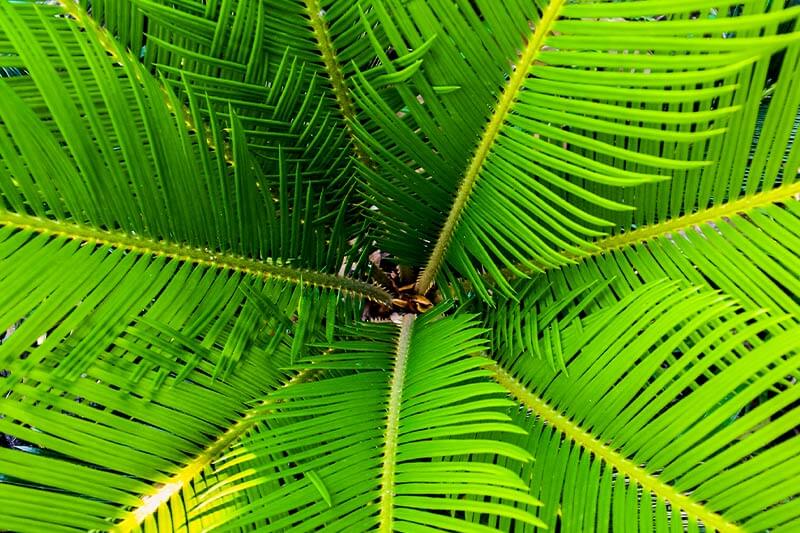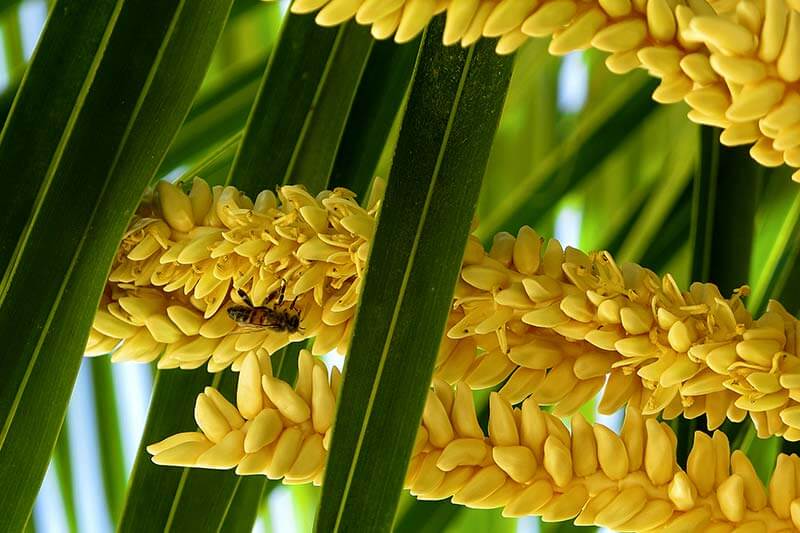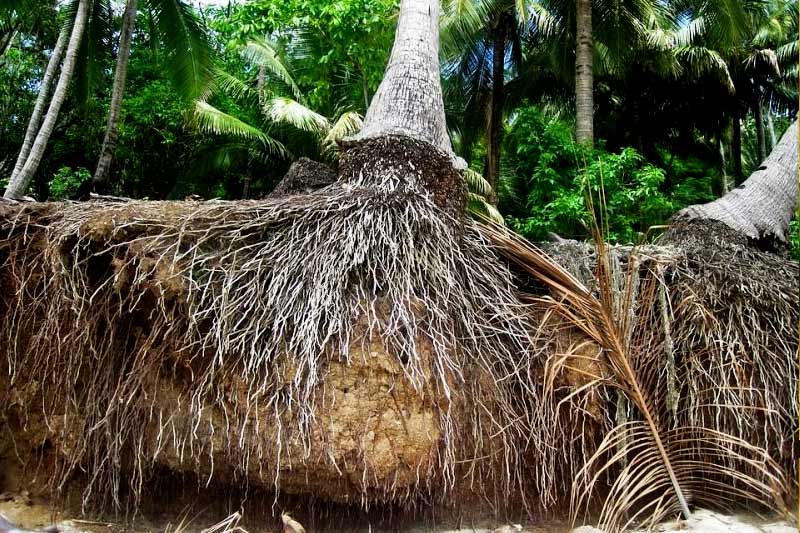Palm trees stand out for their beauty and majestic stature. They rise higher than the trees nearby, crowned with a stunning canopy. While they may appear as a solitary shaft, they are comprised of various sections, each serving a distinct purpose.
A palm tree has stems, leaves, flowers, and roots. Each of these parts has specific functions that make the palm trees unique in the ecosystem.
What we cover
ToggleParts of a palm tree and functions
Stems
The stem of the palm tree is long and cylindrical. Depending on the species of palm trees you are looking at, the trunk is bulging and feels slightly rough on the hands. Other palm tree species may have smooth and sappy boxes. They may also be single or multi-stemmed.
Palm tree stems may also have sharp spines on their branches. You can also observe rings on the stems. These rings indicate the age of the tree as they form every year.
They may also have leaf scars left by leaves as the tree grows taller. Most of the trunk does not have leaves.
Functions of the stem
- Nutrient transfer. Stems contain systems that transport nutrients from the roots and soil to the leaves and crown of the tree.
- The trunk of the palm tree grows to high heights to ensure that the tree can access sunlight.
- It keeps the tree connected to the ground. The palm tree stem grows slowly in the first few years before it sprouts from the ground.
- Holding leaves, flowers, and buds onto the tree.
- Food storage.
Leaves
Palm leaves are known as fronds. Fronds grow at the top of the palm tree like a crown. They are V-shaped.
Depending on the species, the V may be upright or inverted. The upright V-shaped leaves are known as induplicates, while the inverted-shaped leaves are known as reduplicates.
Palm tree leaves range in size from medium to large. They are broad and elongated with a pointed end. Most palm tree species have green to deep green leaves.
Depending on the species of your palm tree, there are four types of fronds.
- Feather fronds or pinnate leaves. These fronds are feather-shaped and vary in size depending on the palm tree species. They can grow up to 75 feet and are symmetrically arranged on the leaf stalk.
- Fan fronds or palmate leaves. These are fan-shaped and have a single center of origin. Thus, they form a semi-circular shape. They can grow up to 5 meters long.
- Entire fronds. They are a single undivided leaf. Depending on the species of the palm tree, fronds may have several leaves.
- Bipinnate fronds. They resemble a fishtail. The Fishtail Palm derives its name from these leaves. They grow up to 4 meters in length and up to 3m in width.

Flowers
Many species of palm trees produce flowers. Flowers of palm trees grow on a flowering stem known as inflorescence in a cluster of brightly colored flowers. Most palm tree species produce flowers once a year.
The inflorescence grows just below the base of the crown of the palm tree. It originates from central. Depending on the species of the palm tree, it may have branches or just exist as a head from which the flowers grow.
Depending on the species of the palm tree, the flowers may have petals. The flowers grow 2 to ten petals. The petals of palm tree flowers may be white or colored. They may also overlap or not depending on the species of the tree.
Different palm tree species produce male or female flowers. Some species produce both or either.
Palm tree flowers attract pollinators to the tree. They are a great source of food for honeybees and other pollinator insects.

Roots
Palm roots have a fibrous root system. Thus, they do not grow deep but spread laterally around the tree like a mat. They grow up to 36 inches into the ground. You can see the roots of palm tree species that grow on shallow soils.
Many palm trees grow in sandy soils. Due to their shallow roots, they are easily uprooted by strong winds.
The roots of the palm tree grow at the base of the trunk and spread instead of going deep like other trees. They can spread up to 50 feet away from the source. They do not grow wide as they expand. Thus, they are not strong enough to resist strong winds.

Functions of the palm tree roots
- Absorb moisture. Palm trees lose a lot of water since most of their trunk is exposed to the sun. Other trees are covered by leaves. The roots absorb moisture from the soil and transmit it to the trunk.
- Stabilize and anchor the palm tree. Like roots of other trees, palm tree roots keep the tree in the ground. Since they are not deep enough, they are easily uprooted by strong winds.
- Feed the palm tree. Besides moisture, the roots of the palm tree absorb and supply necessary nutrients to the tree. It keeps the tree sturdy and alive.
- Reduce soil erosion. Due to the extensive spreading, palm tree roots bind the soil around the tree preventing it from running off with water.
- Medicinal purposes. Palm tree roots can also be used to treat some minor medical conditions. Drinking the water in which the palm tree roots are boiled helps to ease heartburn.
- Victoria Lee Blackstone, (2022) What Are the Parts of a Palm Tree? <https://www.hunker.com/13428638/what-are-the-parts-of-a-palm-tree/> Accessed: 19-02-2024




